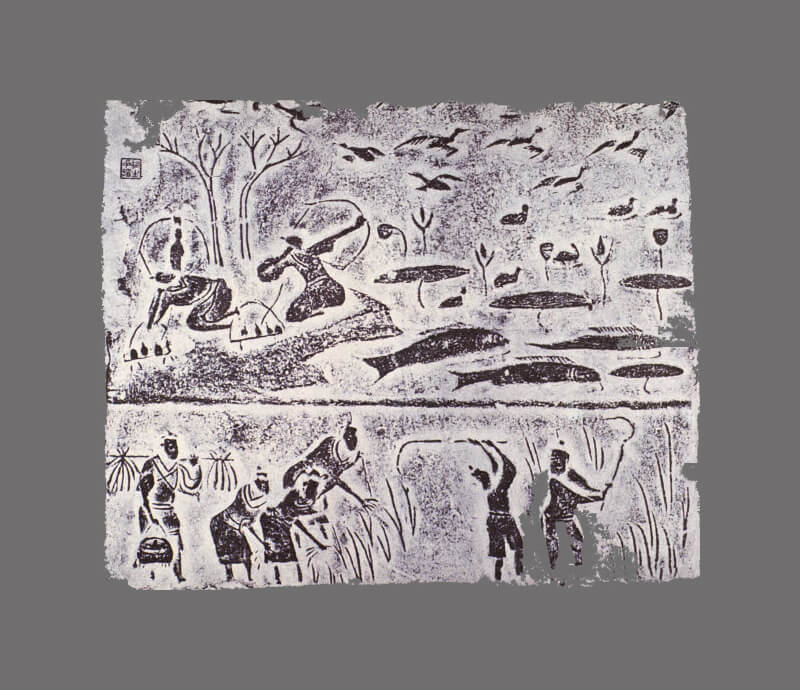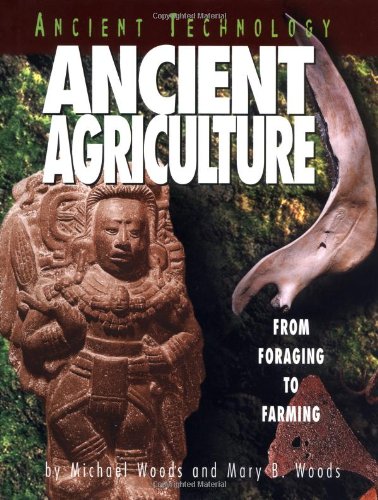From Foraging to Farming
Students will participate in a foraging activity, gaining perspective on how scarcity of resources can affect well-being and how agriculture provides the benefit of a steady, reliable food supply. Then they will read about hunter-gatherers and early agriculture and use maps to explore how geography affected the development of early civilizations.

Background
Lesson Activities
Recommended Companion Resources
Credits
Author
Rose Judd-Murray and Debra Spielmaker | Utah Agriculture in the Classroom
Sources
- Ancient Agriculture From Foraging to Farming by Michael and Mary B. Woods
Standards
Texas Content Area Standards
-
Principles of Agriculture, Food, and Natural Resources: 130.2.c.1
The student demonstrates professional standards/employability skills as required by business and industry. The student is expected to:
- Principles of Agriculture, Food, and Natural Resources: 130.2.c.1.B: apply competencies related to resources, information, interpersonal skills, problem solving, critical thinking, and systems of operation in agriculture, food, and natural resources.
-
Principles of Agriculture, Food, and Natural Resources: 130.2.c.3
The student analyzes concepts related to global diversity. The student is expected to:
- Principles of Agriculture, Food, and Natural Resources: 130.2.c.3.A: compare and contrast global agricultural markets, currency, and trends.
- Principles of Agriculture, Food, and Natural Resources: 130.2.c.3.B: evaluate marketing factors and practices that impact the global markets.
-
Principles of Agriculture, Food, and Natural Resources: 130.2.c.4
The student explains the historical, current, and future significance of the agriculture, food, and natural resources industry. The student is expected to:
- Principles of Agriculture, Food, and Natural Resources: 130.2.c.4.B: analyze the scope of agriculture, food, and natural resources and its effect upon society.
- Principles of Agriculture, Food, and Natural Resources: 130.2.c.4.E: describe how emerging technologies and globalization impacts agriculture, food, and natural resources.
- Principles of Agriculture, Food, and Natural Resources: 130.2.c.4.F: compare and contrast issues impacting agriculture, food, and natural resources such as biotechnology, employment, safety, environment, and animal welfare issues.
-
Principles of Agriculture, Food, and Natural Resources: 130.2.c.6
The student demonstrates appropriate personal and communication skills. The student is expected to:
- Principles of Agriculture, Food, and Natural Resources: 130.2.c.6.A: demonstrate written and oral communication skills appropriate for formal and informal situations such as prepared and extemporaneous presentations.
- Principles of Agriculture, Food, and Natural Resources: 130.2.c.6.B: demonstrate effective listening skills appropriate for formal and informal situations.
-
Social Studies: 6.113.18.c.20
Social studies skills. The student uses geographic tools to collect, analyze, and interpret data. The student is expected to:
- Social Studies: 6.113.18.c.20.A: answer geographic questions, including: Where is it located? Why is it there? What is significant about its location? How is its location related to the location of other people, places, and environments? Using latitude and longitude, where is it located?
- Social Studies: 6.113.18.c.20.B: pose and answer questions about geographic distributions and patterns for various world regions and countries shown on maps, graphs, and charts
- Social Studies: 6.113.18.c.20.C: compare various world regions and countries using data from maps, graphs, and charts
-
Science: 6.112.26.b.11
Earth and space. The student understands how resources are managed. The student is expected to:
- Science: 6.112.26.b.11.A: research and describe why resource management is important in reducing global energy poverty, malnutrition, and air and water pollution; and
-
Science: 6.112.26.b.12
Organisms and environments. The student knows that interdependence occurs between living systems and the environment. The student is expected to:
- Science: 6.112.26.b.12.A: investigate how organisms and populations in an ecosystem depend on and may compete for biotic factors such as food and abiotic factors such as availability of light and water, range of temperatures, or soil composition;
-
Science: 8.112.28.b.12
Organisms and environments. The student understands stability and change in populations and ecosystems. The student is expected to:
- Science: 8.112.28.b.12.A: explain how disruptions such as population changes, natural disasters, and human intervention impact the transfer of energy in food webs in ecosystems;
- Science: 8.112.28.b.12.B: describe how primary and secondary ecological succession affect populations and species diversity after ecosystems are disrupted by natural events or human activity; and
